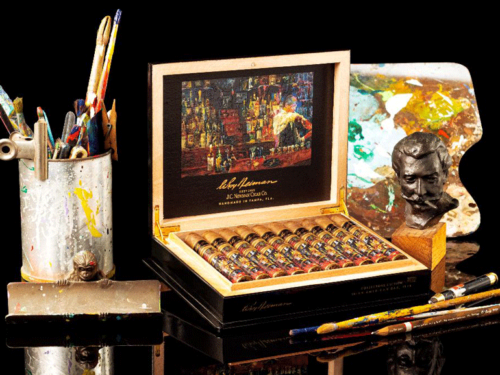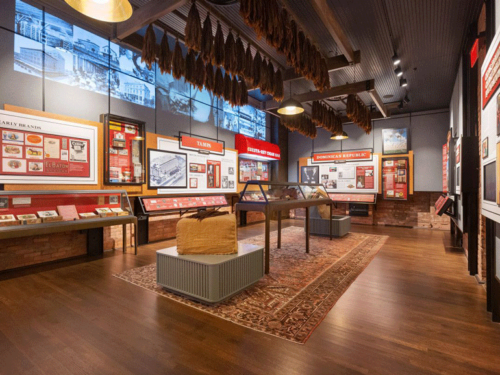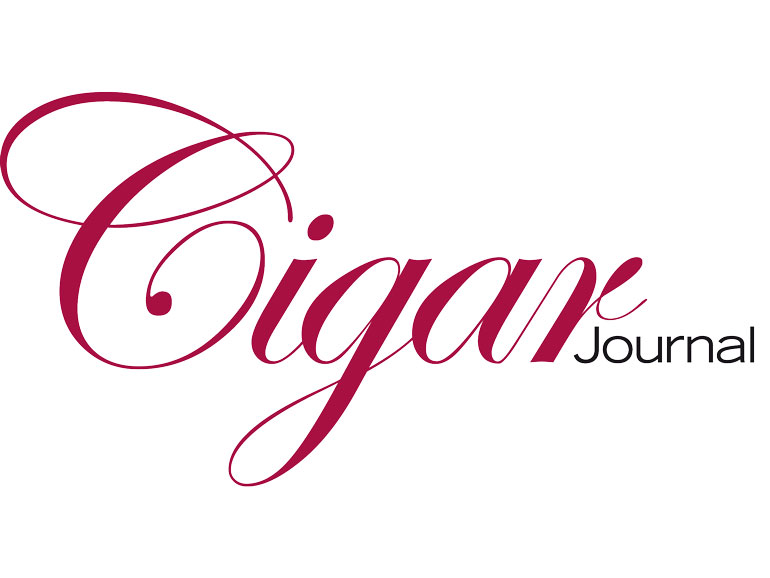On the eve of the 125th anniversary of the founding of J.C. Newman Cigar Co., I visited the oldest cigar family of the United States. The very personal insights – both in the legendary factory El Reloj and also in the company owners’ world of ideas – were impressive.

Eric, Drew & Bobby Newman
BREATHING IN HISTORY
Sometimes you get lucky. Through my research about the company’s history I landed in the middle of the remodeling phase of their factory in Tampa. Nothing brings more emotion-laden anecdotes and hidden things to light than a renovation. And this, exactly, was the impetus for the story about the J.C. Newman Cigar Company. It’s important to the members of the oldest cigar family in America to tell their story. But, at the same time, they’re looking ahead and are investing in a multi-million-dollar project: the complete restoration of the legendary company location in Ybor City. “Until recently, we hadn’t promoted the J.C. Newman name. Our company name wasn’t even written on our cigar boxes. We have one of the greatest stories in the cigar industry, and this milestone provides an opportunity to connect our brands to our family stories,” explains Drew Newman. “Our cigar history is rich and deep. We’ve experienced 125 years with all the ups and downs,” Drew’s uncle, Robert (“Bobby”) Newman confirms. The firm is headed by a triumvirate: Eric and Bobby Newman, third generation of the cigar dynasty, and Drew Newman, fourth generation, Eric’s son. Yet, when speaking of a dynasty, one thinks of an influential ruler, but neither the beginnings nor the development of the business over what is now more than 12 decades were stately.
While we’re walking through the labyrinth of the gigantic construction site wearing helmets, Eric points to a room with 1950s wallpaper. “This is where my grandfather sat, right up to the day he died. He went home and, a half hour later, he died at the proud age of 83.” The current president of J.C. Newman is talking about the company founder, Julius Caeser Newman, who, as the son of European immigrants in Cleveland, Ohio, did an apprenticeship as a cigar roller in 1890. The recession struck when he was in his late teens; he was out of work, but not without hope. Clearly, he was driven by what today is still deeply enshrined in the Newmans: confidence, trust, and unbridled diligence. With 50 dollars in his pocket that he’d borrowed, J.C. bought some tobacco and rolled the first cigar in the family barn in 1895. As early as 1898, Newman employed 100 workers, and, despite major difficulties, the factory survived the Great Depression. In 1934, Stanford Newman, father of Eric and Bobby, joined the firm. His “spirit” also greets us while we continue to observe the construction works.

Company founder, Julius Caeser Newman, realized the American dream. With 50 dollars that he’d borrowed, he bought tobacco to roll his own, first cigars in 1895
EL RELOJ
Still under Julius Caeser’s leadership and being threatened by large competitors who were attempting to force small manufacturers out of business, the company transitioned into a niche in the marketplace, premium cigars. Recognizing that it would only succeed long-term by being in close proximity to tobacco ports and more skilled labor, at the age of 78, J.C. moved the entire operation to the “Fine Cigar Capital of the World,” Tampa, Florida. Stanford was responsible for selecting a manufacturing facility and settled on the famed El Reloj factory as an ideal location. At the time, Tampa was the epicenter for cigars within the United States; for decades, more cigars were produced here from Cuban tobacco than in Cuba itself. El Reloj was built in 1910 and was the largest cigar factory in the world. Every factory had a nickname, and due to the large clock on the factory tower, which had long set the rhythm of the neighborhood, the building is only called “El Reloj” – the clock factory. With the purchase of the brand Cuesta-Rey, Stanford Newman landed a coup, which catapulted the company further to the top. In 1986 – when the cigar industry was experiencing a major slump – together with his sons, Stanford bought up the shares of the other nine family members. When recounting the story, Eric says, “Our other relatives got the money, we got the debt and the opportunity.”
INNOVATION, DILIGENCE, AND LUCK
Only a few weeks later, Carlos Fuente, Sr. called upon Stanford with a proposition. Carlos wanted to close his Tampa factory and concentrate his efforts on his handmade operation in the Dominican Republic. He asked if Stanford would be interested in making his Tampa factory brands, to which he agreed, provided that Carlos made handmade cigars for J.C. Newman Cigar Co. Later, parts of sales and distribution were merged, and created even more success for both families. The partnership still holds to this day. “Fuente’s strength lay in the production of longfillers, ours in sales and distribution. We still complement each other wonderfully even now,” says Eric, happily. In 2003, J.C. Newman introduced Quorum, which was made in an independent Nicaraguan cigar factory. “As the brand grew, we wanted to personally oversee production and quality control,” Drew explains. To facilitate this, in 2011, the Newmans built Puros de Estelí Nicaragua, S.A., known as J.C. Newman PENSA. “Today, we have 800 employees handcrafting all of our Nicaraguan brands, including Brick House, Perla del Mar, El Baton, and Quorum.” Fuente is still producing the cigars of the Diamond Crown, Cuesta Rey, and La Unica brands.
“To be successful in business, you have to work hard, work smart, and it takes a certain amount of luck,” says Eric.
“… Exactly what we had at the right time with the Fuentes,” Bobby says, completing his brother’s sentence.
The harmony and the stream of consciousness of the Newman leadership is remarkable. Three very different characters and talents, who treat each other with a great deal of respect and equanimity, are resolutely leading the family business into the future.

The legendary factory El Reloj is being restored. A large area for the production of longfillers open to public viewing is included
HANDING OVER THE TORCH
“Our philosophy has been to embrace the changes in our industry and use them to our advantage,” Eric discloses about one of the secrets to the company’s success. “The Diamond Crown Lounges are the best examples of that,” Bobby explains. When the smoking bans spread across the United States, the brothers sought out partners who were interested in affiliating their cigar shops with smoking lounges. This saw the birth of the Diamond Crown Lounges – and thus the first concept of branded cigar oases across the globe. What they lost in purchasing power through the smoking bans was balanced out by the lounges – the idea became a win for the entire branch. “But now, we’re passing the torch on to Drew,” says Eric. “The industry has changed, and with Drew on board, we’re prepared for our current challenges. He’s got a clear long-term vision and the energy to implement those ideas.”
But neither Eric nor Bobby intend to the leave the field. “We’ve handed him the baton, but we’re still running along with it; we’re following Drew,” Bobby laughs. “We’re going to be working here right up until our last day – like our grandfather and father, who took his last breath here in the office.”
Eric and Bobby don’t see it as a burden but as a privilege to be able to work so long. That Drew has always known that he’d carry on the torch was a gift that he didn’t take for granted. He is, on the other hand, grateful to have so much experience backing him up – because both his dad and uncle support him in his visions.

The Newmans can look back on one of the greatest stories in the cigar industry. Three generations and 125 years, full of highs and lows
2020 AND LOOKING AHEAD
The idea of comprehensively restoring El Reloj for the anniversary and also making it accessible to the public came from the youngest Newman. “We’re investing in the future, for the next four generations,” says Drew. He is not thinking in 10-year increments, his visions go far beyond that. “I’m thinking of what we want to do in 50 years’ time; who we want to be, how we want to act. I expect that I’ll still be sitting in this office 50 years from now.” Drew has recognized the zeitgeist of the young enthusiasts: an almost scientific, unremitting interest for the craft of cigar manufacturing coupled with the need to experience who’s behind the respective brand. Beginning in 2020, the factory will not only offer tours but in-depth educational experiences, including rolling and blending seminars. A traditional lector will entertain the employees as well as the visitors. A museum provides insight into the past and tells the family story, but also the story of Ybor City, America’s cigar city. “We’re creating an immersive cigar experience that won’t require a passport. We want to welcome thousands of visitors here every week, just like popular breweries and vineyards across the country, to share our tradition and craft.” Infrastructure improvements on the building, such as a new shipping department and additional offices, will support company growth for years to come. And J.C. Newman fans can also look forward to new products. The American, the first and, to date, only handmade Puro from the United States, was just the start of the releases for the company’s jubilee. From May 2020 onwards, the Diamond Crown brand will be expanded by a limited Signature series. El Reloj, as a brand, will be revitalized and will be available exclusively in their factory’s store. When the renovated factory opens its doors for visitors in spring, this lesser known quarter of Ybor City will be rejuvenated and will bring the city an influx of tourists. Similar to the way the tower clock kept the rhythm of the locals and the surroundings, El Reloj will be there at the center of Ybor City once again. Our journey in the time capsule through the entire factory halls has ended. We stand on the roof and look out over Tampa.
“We owe it to our grandfather and father to invest in the future,” Eric says, bringing his story to a close. “At the same time, the opening and renovation of El Reloj is a gift to the city and an homage to the great art of cigar rolling. It has been the same for centuries. There’s no law, no regulation, no ban that will ever be able to change that.”
Copyright Images: Laura Sfiat












